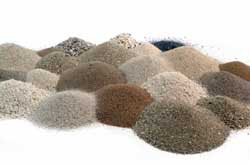ADM building third feed-premix plant in Asia

Archer Daniels Midland Company (ADM) plans on constructing a new feed-premix plant in the city of Nanjing, eastern China, this will be the third facilty in the company’s Chinese premix network.
The Nanjing plant, which is expected to be complete in the first half of 2015, will manufacture nutritional feed premixes that can be added to animal rations to promote good health and optimal growth. Such premix formulas typically contain various vitamins and minerals, amino acids such as lysine and threonine, and other ingredients. ADM will manufacture an estimated 30,000 metric tons of premix products per year at the Nanjing facility, which will also provide 80,000 metric tons of additional capacity for the production of complete feeds and concentrates. The plant is expected to employ about 150 people.
“ADM is committed to helping China meet its goals for food security and safety, and our plant in Nanjing is part of this commitment,” said Brent Fenton, president, ADM Animal Nutrition. “As the country’s population continues growing and personal incomes rise further, the nation’s demand for meat is expected to increase. In this environment, our decades of experience producing animal feeds and feed ingredients—coupled with our insistence on consistent, high-quality products—will serve China’s livestock producers well.”
The Nanjing facility complements ADM’s existing premix plants, which are located in Tianjin and Dalian in northern China. The company also has a tolling relationship with a third-party feed distribution facility in Chengdu, in the country’s southwest. Fenton says these facilities are the first in what ADM envisions as a national premix network.
ADM’s feed premix plants are part of a broader effort to help China further its food-security goals. The company is collaborating with China Agricultural University on a research program to develop efficient and lower-cost feed programs for dairy cattle using corn processing co-products such as distillers grains and locally grown corn stover—the stalks, cobs and leaves left on farmers’ fields after the harvest. Feeding cattle a mix of processed crop residues and co-products can free up grain for other uses and reduce the use of imported hay and other forages.











